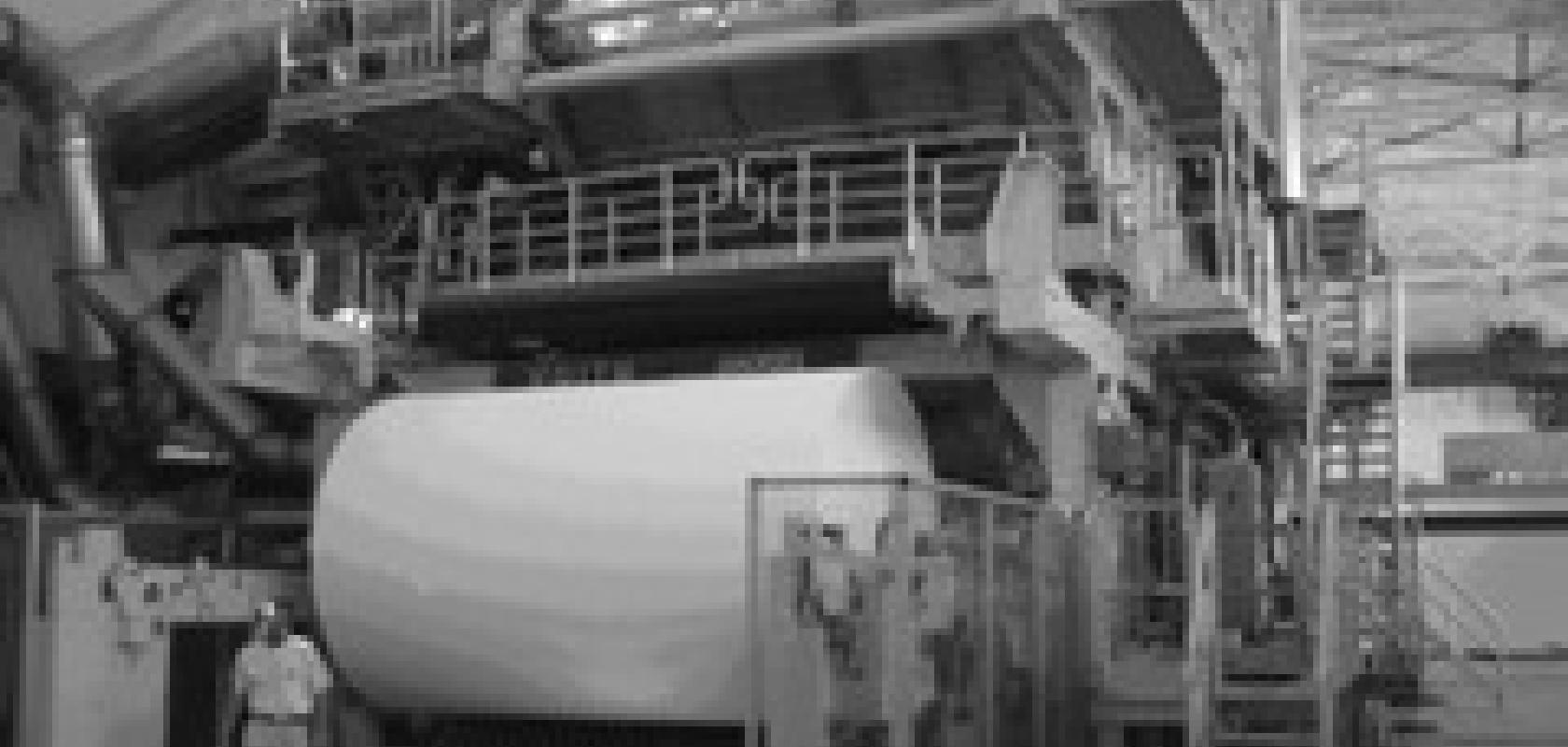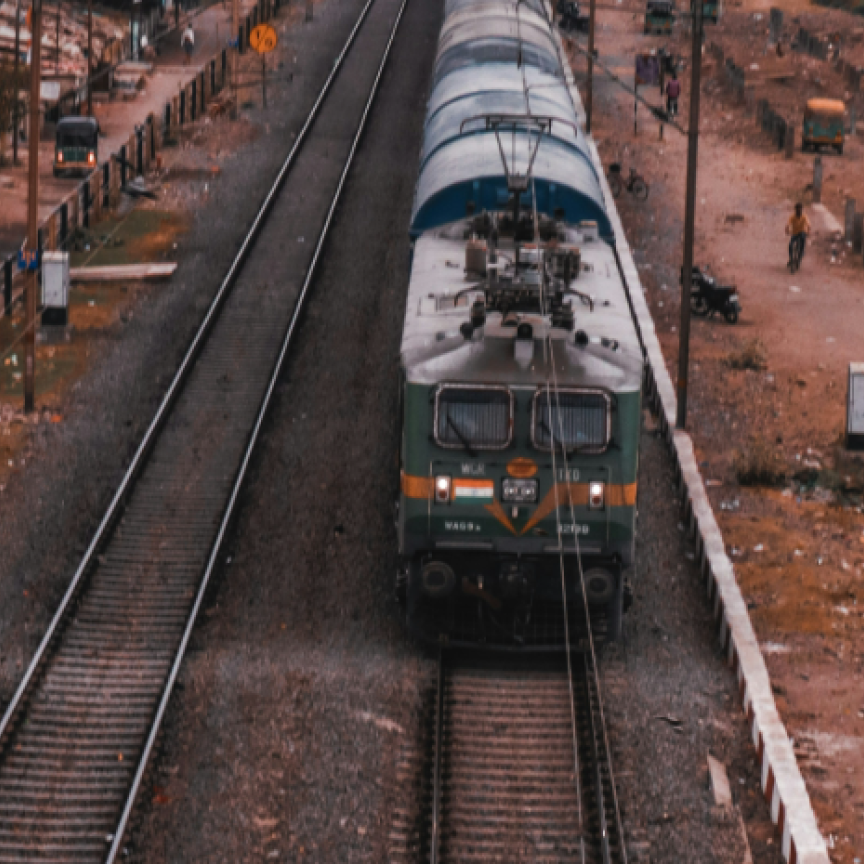Vision systems for surface inspection are typically used to monitor products that are manufactured in continuous blocks with no definitive end point. Paper, wood and textiles are three such examples and large pieces of machinery are involved in forming the finished product. Manufacturing plants are usually in constant operation, with machinery running at high speed, so vision systems are required to check the product as it passes through the various stages of production for defects and for overall quality.
Often the product will also be graded based on quality and vision systems will be used to check compliance with quality standards for each grade. Newsprint, for instance, has tight quality restrictions and if the paper doesn’t meet the guarantee provided by the paper merchant the customer can not only reject the roll, but the entire shipment of paper.
Paper merchants rely on surface inspection systems in their manufacturing plants. The process itself is relatively complex. At the so-called ‘wet end’, paper slurry is layered onto a web 20-30ft wide and formed into a homogeneous sheet. This then goes through various drying stages until it can support its own weight and be spun into a roll. Then follow numerous post-processing steps to deliver the final product.
‘A break in the sheet can be a costly disruption to the production process,’ explains Patrick Koropatnick, product manager at Papertech, a company based in North Vancouver, Canada, developing machine vision systems for web and steel-based production lines. Machinery is feeding paper at rates from 10 to 30m/s, so in two minutes more than a mile of paper can have passed through the machine. If the sheet breaks, the entire production process can take up to an hour to clean up, rethread and restart.


JAI’s multi-spectral camera technology can provide a visual surface inspection of the cloth (left) while the NIR channel (right) detects flaws hidden in the fabric, such as a human hair.
In order to capture an event, such as a web break, external triggers are placed along the length of the machinery. ‘The challenge for a vision system is not only recognising a specific defect on the fast-moving equipment, but, in particular, to establish where the defect originated,’ explains Koropatnick.
Analysing the frame of footage showing the break can only tell the engineer so much and in the vast majority of cases, the root cause of the break will have occurred further upstream in the process. The engineer will need to trace the break back to the cause, which could be cracks forming at the edge of the paper or a water drop hitting the sheet, in order to avoid a reoccurrence of the problem. WebVision synchronises multiple cameras throughout the process so the exact section of broken paper can be tracked back to the source of the break.
Paper production plants run continuously and computer storage space for the data can be problematic. The system must be able to store hours’ or days’ worth of information to analyse flaws in the production process occurring during the night or at weekends. Paper production is also a very dirty industrial process. ‘At the “wet end” moisture levels are high and the air is full of pulp, steam and flock, all of which can make it difficult to acquire high quality images,’ says Koropatnick. Inspection systems at the tail end of the production process analysing the final product for quality are not subjected to these conditions, but an event capture system is required to monitor the process in its entirety.
‘Event capturing began with analogue cameras, but there was no method of tracking the event back to the source,’ explains Koropatnick. Line scan cameras provide the ability to scan rapidly-moving paper in fine detail. The disadvantage with high-resolution line-scan camera inspection systems is that they need to be close to the sheet, and are therefore used only at the tail end of the process where environmental conditions are less harsh. Digital matrix cameras can be used throughout the process, but, most importantly, at the ‘wet end’, as the resolution is such that cameras can be positioned 20-30ft away in protective enclosures. The longer cable lengths available with Gigabit Ethernet have also allowed cameras to be placed further from the PC relative to other transmission standards, thereby increasing the coverage.

The WebSpector system from Shelton.
An example of a WebVision end-user is Stora Enso, a company producing paper, industrial packaging and wood products. Stora Enso is using Papertech’s WebVision event capturing system at its facility in Nymölla, Sweden. The plant yields a combined total of 805,000 tons of pulp and paper per year, and Papertech’s system was installed to monitor sheet quality and to capture images of any breaks in the sheet.
At throughput speeds of 10 to 30m/s, cameras must run at fast frame rates and capture high-definition, crisp images. Pierre Cambou, product engineer, imaging product line at e2v, states that for surface inspection, speed is a key enabling parameter. ‘Whether it is for wood, paper or print inspection, systems are designed in respect to production imperatives, not inspection limitations. The cameras have to keep up with web speed,’ he says. e2v’s highspeed line scan cameras Aviiva and Eliixa are suited to surface inspection, providing high signal-to-noise ratio and fast data transfer rates.
‘For high-speed systems, the goal for line scan camera manufacturers is to increase the number of pixels per camera while maintaining the line rate,’ says Cambou. Increasing the number of pixels per scan will reduce the number of cameras required to cover the production line.
Most high-speed applications employ 1k line scan cameras. A roll of paper 10m wide divided into 100μm partitions in the scene equates to 100,000 pixels per line. If 1k cameras are used, 100 cameras will be required to monitor the entire width of the paper. Cambou states: ‘These figures are not unrealistic; recently a paper manufacturer requested 200 cameras operating together, which is a challenging system to set up.’
Using a 4k camera will reduce the number of cameras running in the system by a quarter, but the cameras must be able to keep up with web speed and increasing the number of pixels per scan usually reduces the line rate. ‘Our aim is to increase the number of pixels while maintaining a high line rate,’ comments Cambou.
Paper merchants will be looking for defects such as holes, dirt, wrinkles, streaks, spots, stains or edge cracks in the final product. These will have specific characteristics that machine vision systems can be set up to recognise. Organic variances, however, such as grain patterns in wood or paper, are difficult to identify using machine vision. A trained human eye can distinguish between different types of wood – as well as differing grades – simply by looking at the grain. This is more difficult to achieve using an automated system, as the patterns are random.
Stemmer Imaging’s Common Vision Blox (CVB) Manto software package is equipped with a surface inspection mode that can be taught to recognise grain patterns to identify the quality of the wood. It also recognises defects, such as knots or blemishes. ‘Timber merchants will price wood on quality, the highest grade being sold for the highest price, and Manto can be trained to identify the quality through teaching it what is and what isn’t acceptable for a specific grade,’ explains Mark Williamson, sales and marketing director at Stemmer Imaging. ‘Assessing the physical surface, for dimples for instance, is best performed using techniques such as reflective or structured light. In these circumstances, Manto wouldn’t be suitable. Where Manto is suitable is assessing organic patterns that are difficult to define but determine the quality of the product.’

Images of wood grain can be checked for quality and defects by Stemmer Imaging’s Common Vision Blox (CVB) Manto software package.
Textile manufacture
Textile manufacture is a further area where surface inspection systems play a key role in supplementing visual checks carried out by humans assessing functionality and aesthetic appearance. Textiles are produced in many forms and for a wide variety of end uses including automotive, aerospace, military, recreation, construction, home decoration, insulation and apparel.
According to Mark Shelton, CEO of Leicester-based Shelton Vision Systems, in most cases manufacture of a textile fabric is part of a multistage process, of which the textile fabric would account for a small proportion of the total costs. The scale of the cost depends on how far the defective component has reached in the overall assembly process before discovery, as greater value is added at each stage. ‘This is a particular problem for the textile producer, as much of the wasted value added costs are claimed in compensation from them by their customers,’ says Shelton.
Shelton Vision Systems’ WebSpector provides quality inspection for various textile demands, from simple plain cloth for basic apparel to critical safety or performance cloth for parachutes and airbags.
Shelton explains that in most textile manufacturing businesses there is a vast, ever changing range of products, as well as shorter production runs of each style or design. To ensure accurate and repeatable defect detection it is necessary for the system to ‘understand’ what the perfect product should look like. Therefore, Shelton notes, a vital feature of the Shelton WebSpector system is an unsupervised, self-teaching function that calculates and then stores accurate operation settings for each style.
‘As well as a large range of products, textiles are subject to many causes of defects that originate from raw material, manufacturing processes and applied additives,’ notes Shelton. The severity of defects, even across several materials from the same origin, can vary. The WebSpector system is capable of grading the defect within a defect class, as well as classifying different types of defect. Shelton explains that grading allows filtering of inconsequential defects of a certain type, while recording more severe examples, whereas classification provides a clear distinction between defects of differing causes that may appear visually similar. An example of classification would be for the system to understand where a piece of fluff is loose on the surface of a fabric as opposed to a piece of fluff that has been entangled within the fabric construction.
Defects can also take a form that is difficult to pick up using cameras operating solely in the visible spectrum. JAI’s multi-spectral camera technology provides simultaneous imaging over the near infrared (NIR) and visible spectra and can be tailored to a number of different applications. Potentially, for example, visible images could be used to inspect the surface appearance of a fabric, while NIR images could identify defects within the woven threads that would not be picked up by a purely visible system, such as a human hair. ‘To carry out this inspection using two different cameras can be costly and difficult to implement, as the cameras need to be regularly aligned to maintain accuracy,’ explains Tue Mørck, vice president of sales, EMEA at JAI, a company with headquarters in Copenhagen, Denmark, producing digital camera technology.
The correct proportion of different colours within the fabric is a further common inspection criterion of textile manufacturers. Mørck gives a further example of how the multi-spectral technology could be used: ‘The beam splitter within JAI’s camera can be modified so that the cloth is inspected for the presence of two different colours.’ The technology is utilised successfully in a number of different industries, from food sorting to surveillance, as well as in surface inspection.


